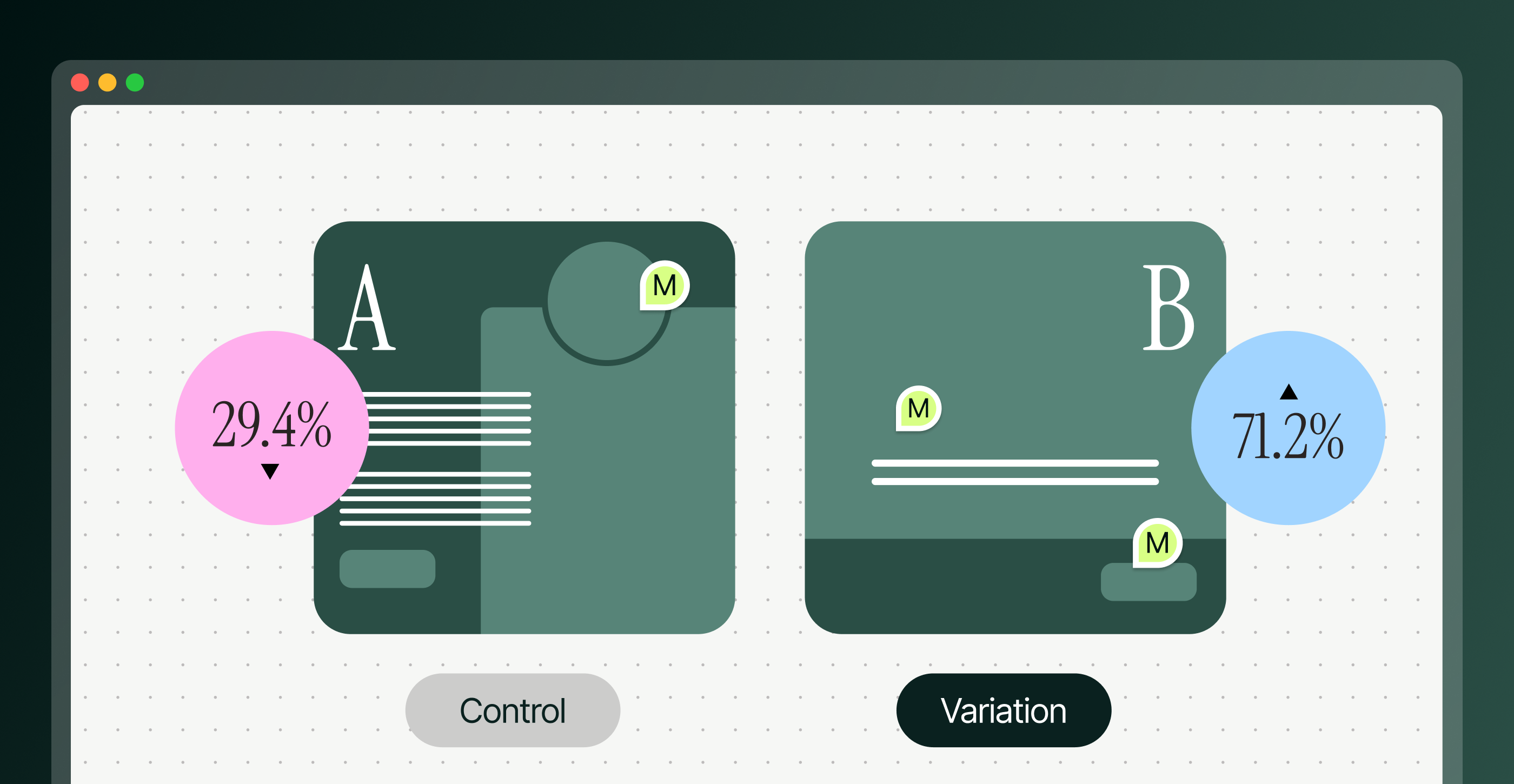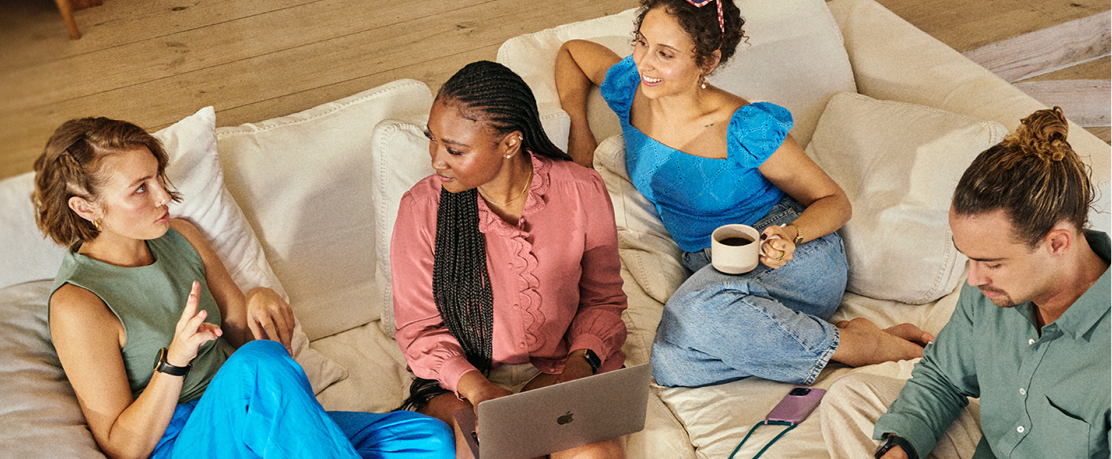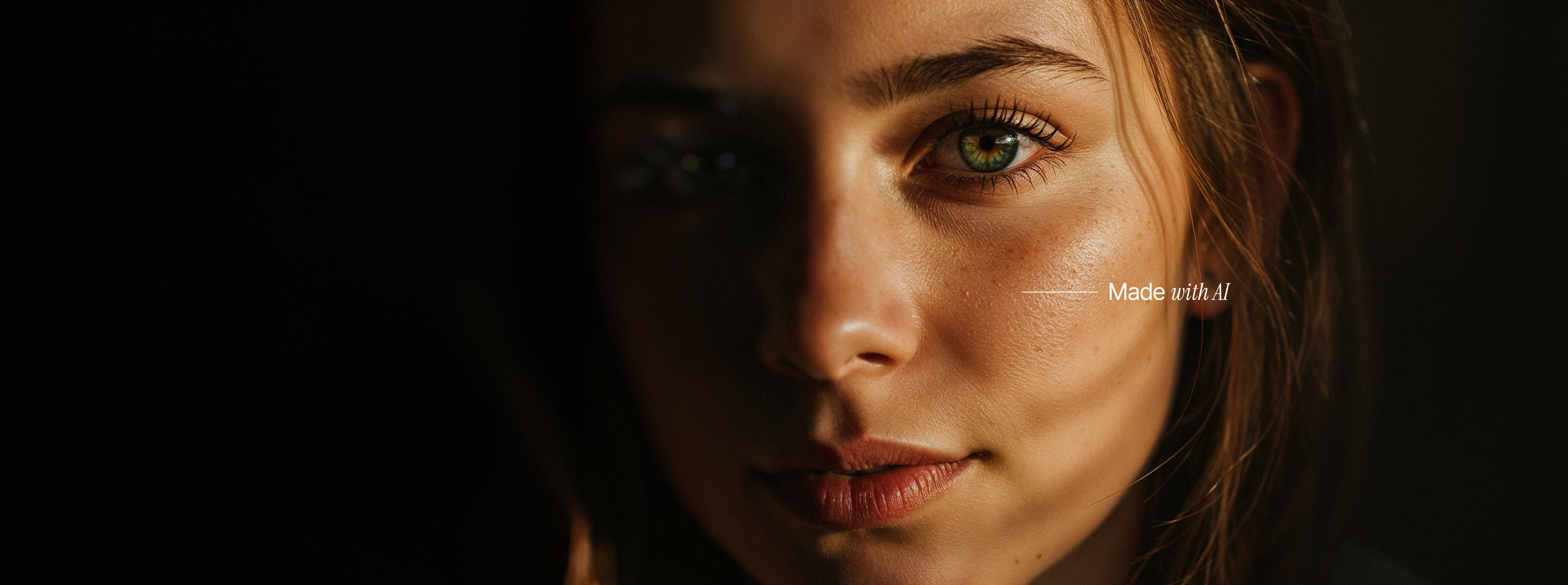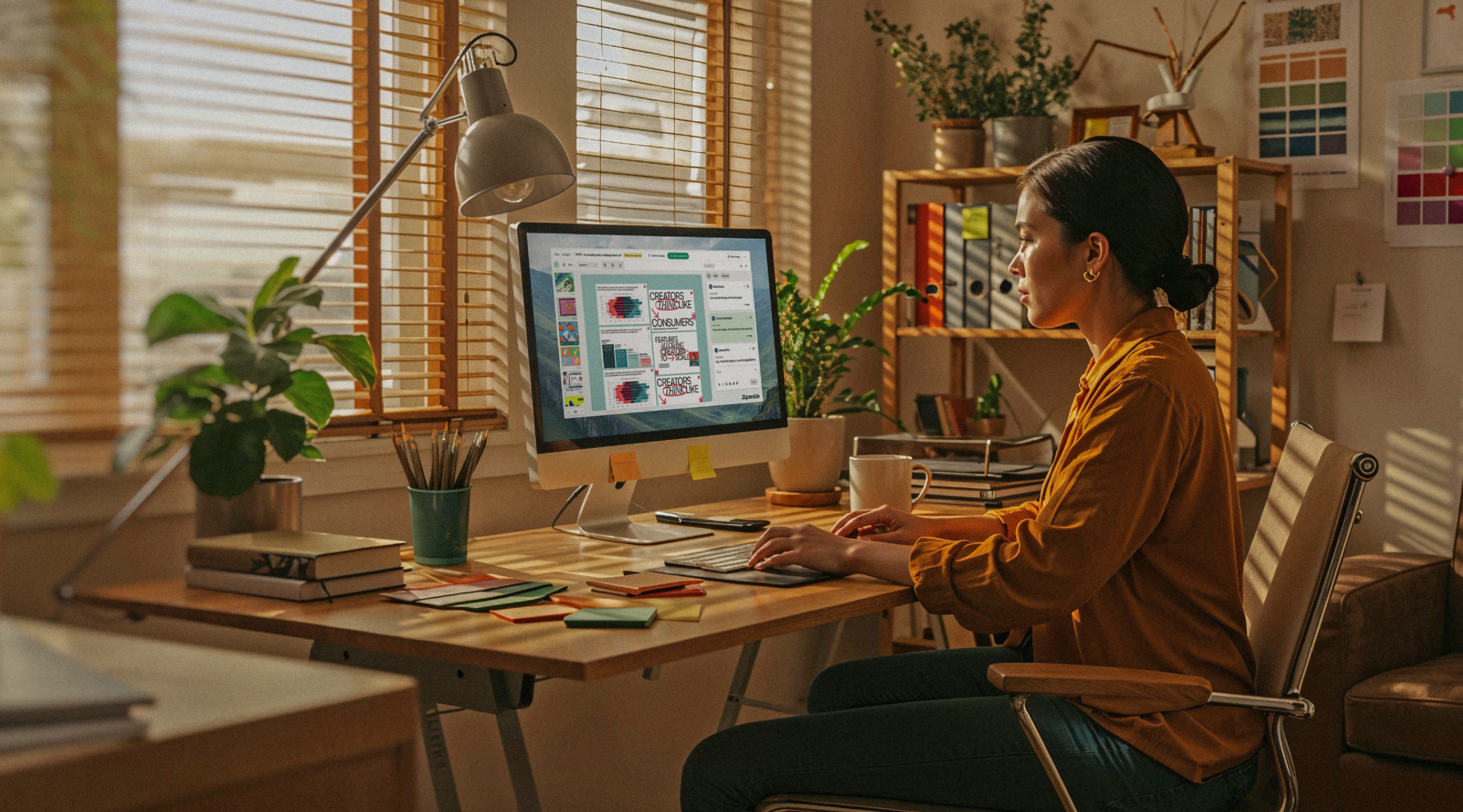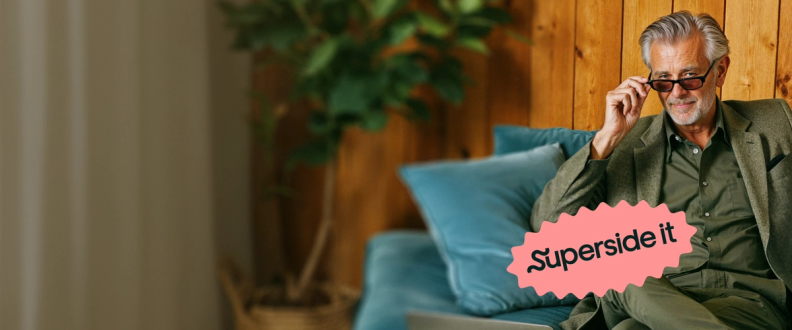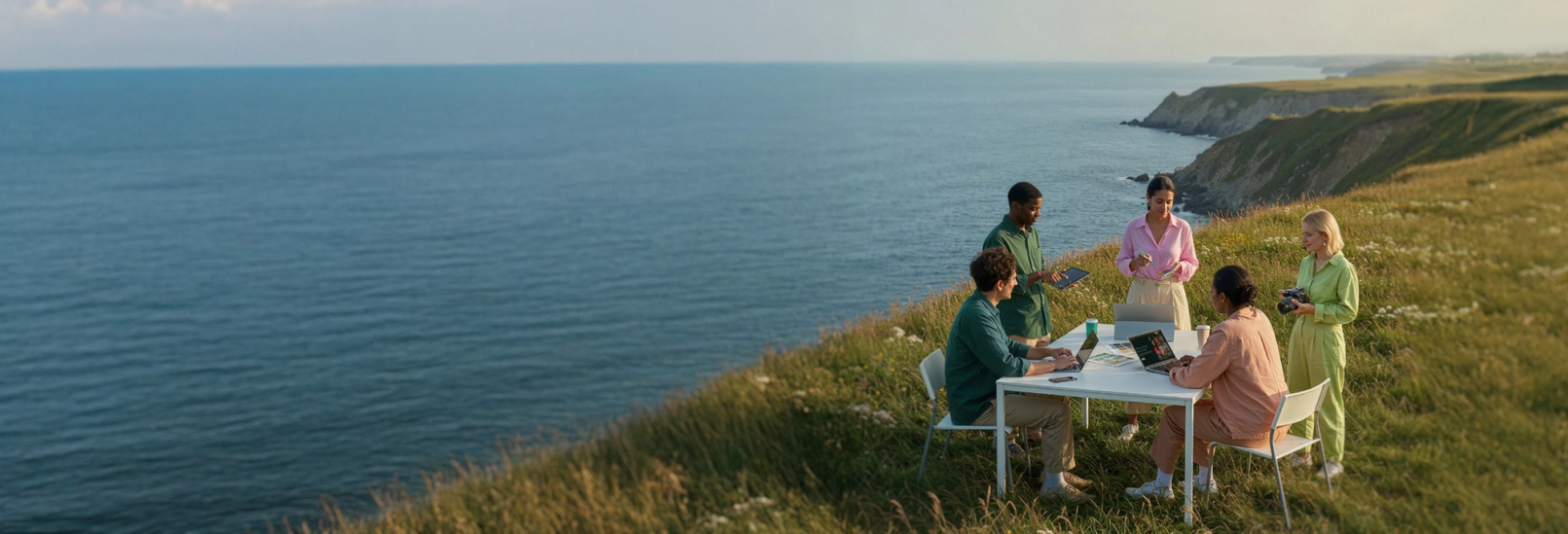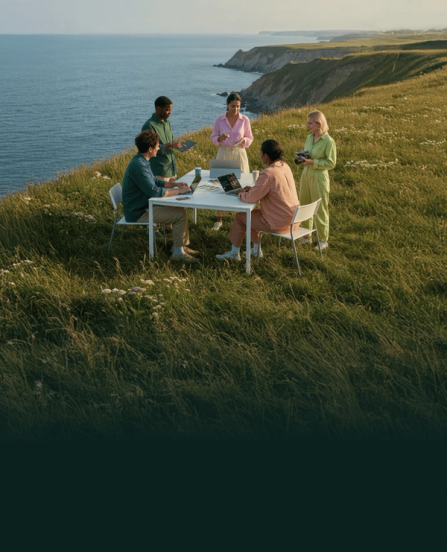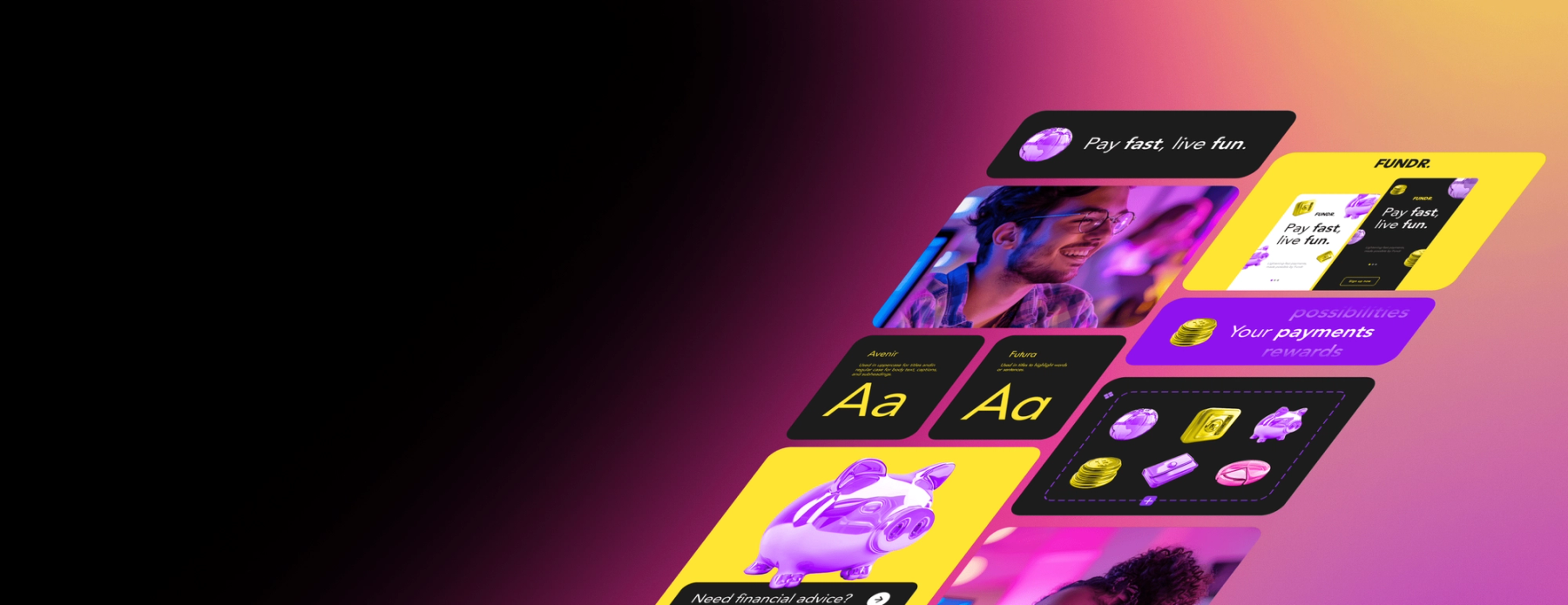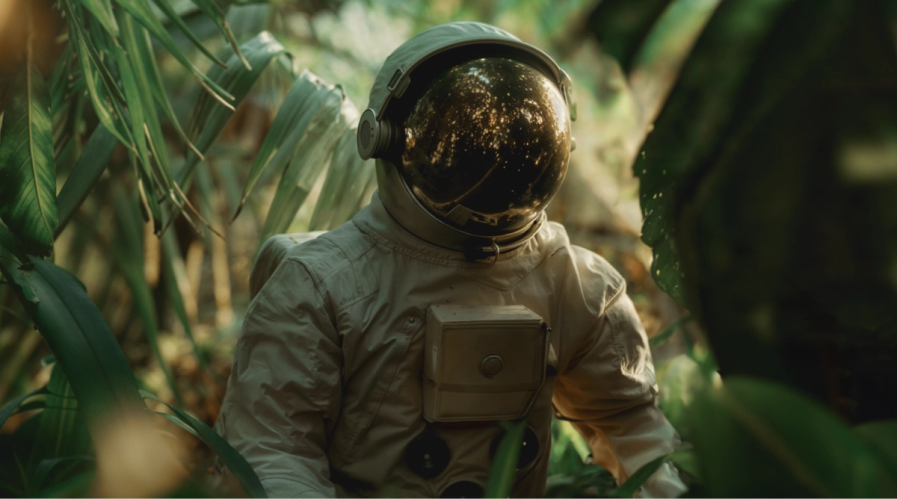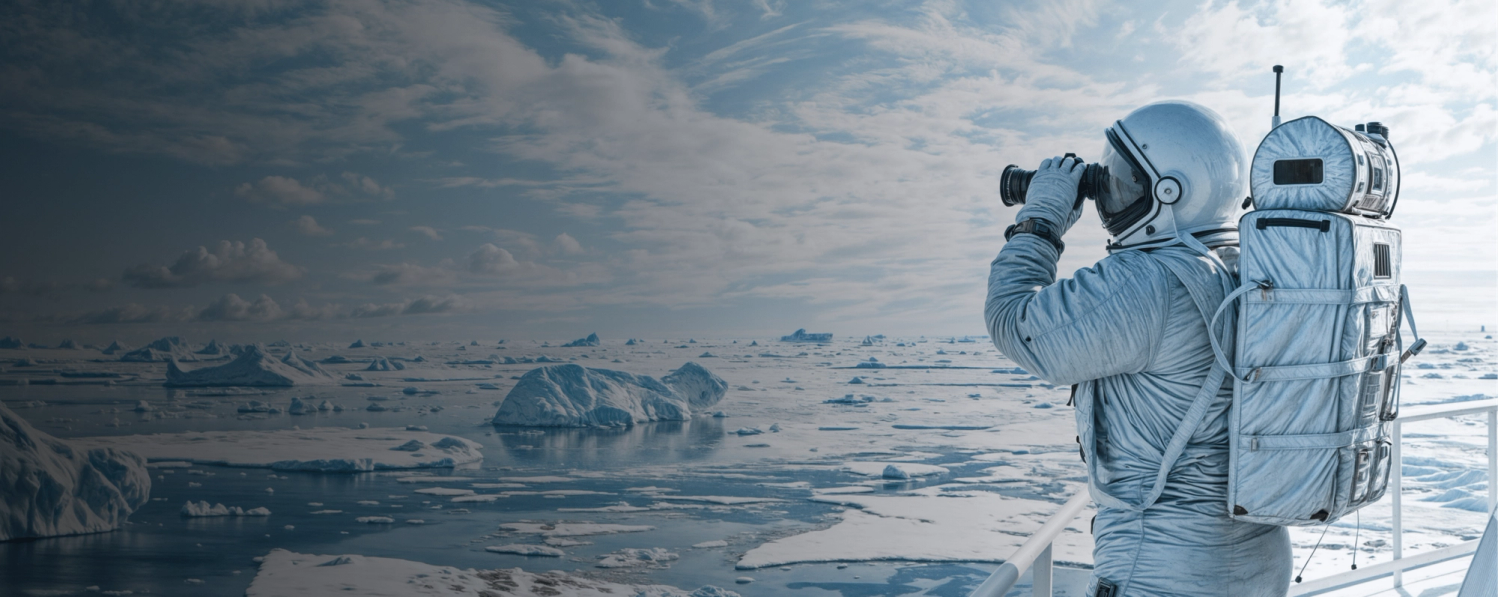7 elements for great creative campaign development in 2025
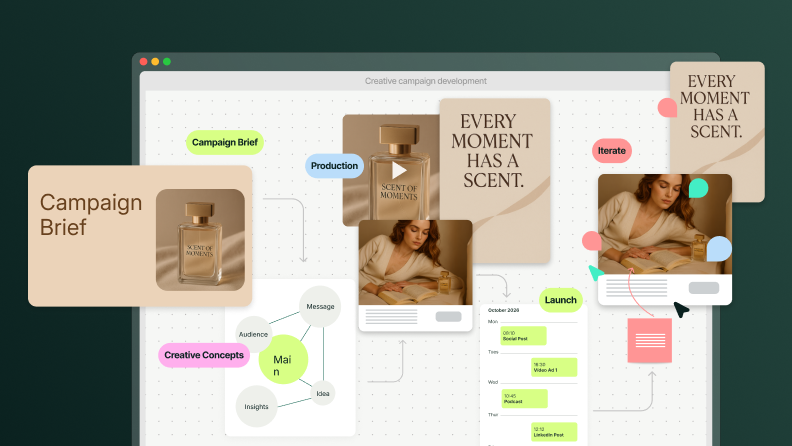
Want to know what makes the best campaigns work? Superside’s 7-step creative campaign development framework breaks it down. From conceptualization to AI-powered execution and analysis, see how top brands like Nike, Airbnb and Hilton build ideas that perform.
A successful campaign is both an art and a science. Ideally, all decisions are tested and backed by solid creative performance data. But never at the cost of creativity.
While it pays to be strategic, creative quality drives about 56% of a campaign’s results. This is why 80.5% of marketers see it as one of the strongest predictors of success, and nearly two-thirds have increased their focus on creative in the past year.
Strong creative partners help today’s enterprise-level brands (and their overstretched in-house teams) strike the right balance. Right now, 78% of in-house creative teams say they can’t keep up with demand, and 76% of creative leaders say they and their teams are at risk of burnout.
In this article, we break down what it takes to generate and implement innovative marketing campaigns that deliver results. Read on for our top seven campaign strategy steps and use them right away to connect with your target audience, stand out from competitors and achieve results.
7 elements to develop a successful creative campaign
The struggle is real. Not following creative brief best practices, poor planning, lack of testing and siloed execution can sink a creative campaign before you’re out of the starting gate.
At Superside, we understand the process and pressure of creative campaign development, having worked on over 70,000 projects to date.
From discovery to design to delivery, the seven steps below will transform your creative process. They’ll take you from scattered ideas and stressful processes to streamlined, effective marketing campaigns.
1. Discovery and alignment
A successful journey needs a good roadmap. In the world of creative development, that means having a thorough understanding of your vision and goals.
Your campaign objectives might be to increase conversions, drive sales or boost brand awareness. A clear problem statement defines your goals so you know what success looks like. For example, if you know you want to raise sales by 20% or increase your social media following by 50%, your next steps are much clearer.
To set your goals, it’s critical to conduct research into your target audience, customer pain points, market trends and competitor strategies. With data-backed insights, you can create a detailed brief to guide your creative thinking.
A good brief helps avoid problems and misunderstandings down the line. Clearly set the campaign’s objectives. Describe the target audience and lay out your central message. Your brief should also include practical details such as budgets, timelines and brand guidelines.
Tie it all together with a Single-Minded Proposition (SMP) statement to guide your entire campaign. What’s the one non-negotiable message you need to hit home? Keep it grounded. Your SMP must be backed up by evidence that gives your audience clear Reasons To Believe (RTBs) in your product or service.
2. Brainstorming and concepting
Now that your foundations are in place, it’s time to turn your roadmap into big ideas that actually work.
- First, gather your team to brainstorm as many creative ideas as possible. At this stage, all ideas are welcome, no matter how out-there or wacky they may seem. This no-holds-barred creative thinking approach gives you a menu of concepts, themes and new ideas to pick from.
- From this long list, sift through your ideas to find the ones most likely to resonate with your target audience and meet your objectives. Once you have a winning concept, you should be ready to develop possible copy lines and key visuals.
(Source: Lions)
When you’re in the brainstorming phase, the Cannes Lions Creative Effectiveness Ladder provides a great way to filter your ideas and land on a strong concept. The ladder outlines six types of impact a creative campaign can have, ranked from the least to the most commercially effective.
It’s useful to decide early on where on the ladder you want to be. Are you after a temporary boost in sales, or do you want to create a long-lasting, iconic brand?
Your campaign should be held together by a central thread of key messages and brand positioning.
It’s also helpful to define different “creative territories,” as this lets you experiment with visuals, messages, formats and various channels. Creative territories might include different taglines, visual concepts or art direction. All of these should connect back to the same central campaign idea.
3. Go-to-market and orchestration
Now that your creative concepts are finalized, it’s time to bring them to life. For omnichannel marketing campaigns, sequencing and timing are crucial to prevent overwhelming your audience.
Good marketers think of execution like an orchestra playing a beautiful piece of music, where the conductor ensures every instrument plays at the perfect moment. In other words, the marketer ensures the right message reaches the right audience at the right time. Carefully plan how to create a seamless, cohesive experience across your campaign funnel.
Even the most seasoned creative professionals make mistakes during the creative process. Set up strong QA processes to catch inconsistencies, errors or compliance issues before the campaign materials go live. This integrated, systematic approach helps keep teams coordinated and ensures everything is on track from the beginning.
4. Agile optimization
The days of “set it and forget it” marketing campaigns are long behind us. Instead, short experimental cycles have become the norm.
The world’s top brands have systems in place that let them test their creative, gather feedback and adjust their marketing campaigns on the fly. Agile sprints (short, focused bursts of work based on real-time feedback) are a great way to make quick improvements across your campaign’s touchpoints.
The best marketing campaigns evolve through creative experimentation and a flexible approach. While your campaign runs, shift attention and budget to the areas that need it most. Good performance data shows you what works and what doesn’t.
Plan for this campaign adjustment process from the start. When you set up your budgets and timeline, include room to test and refine. Around 90% of top marketers set aside funds just for experimentation.
5. Production and execution
In the production phase, your creative concepts become assets that real people can interact with. This is where your research and roadmap start to come to life to meet your goals.
Modern creative campaign plans take into account a wide range of channels. Your production phase could include digital and print ads, TV spots, social media, content creator campaigns and experiential marketing. It all depends on where your audience is most likely to spend their time (and money).
In such a complex marketing environment, you can’t afford to leave anything to chance. Before you go live, coordinate your launch with the utmost precision. Develop a media plan to nail down timing and budget.
That said, there are ways to simplify production:
- Modular asset kits can save you major headaches and a lot of time. These typically include a collection of flexible, reusable creative components, e.g., templates, images, headlines, CTAs and design elements.
- A solid asset library also makes it much easier and faster to launch new marketing campaigns.
6. Measurement and analysis
As the campaign unfolds, it’s critical to tweak your assets based on performance data. Use analytics tools and A/B testing to monitor what resonates with your target audience and gets an emotional response.
Once the campaign wraps up, there’s a little more to do. Remember those goals and objectives you set up as part of Step 1? Now’s the time to check how your campaign stacked up.
There are two main types of KPIs to consider at this point:
- Leading indicators predict what’s coming. For example, higher website traffic or higher engagement rates can signal improved brand awareness or potential future sales.
- Lagging indicators tell you what’s already happened. These sales figures and market share data.
To measure performance, you can use tools such as Marketing Mix Modeling (MMM) or Multi-Touch Attribution (MTA). These let you see how different channels and touchpoints work together and influence each other. They’re worth looking into if you regularly run complex omnichannel campaigns.
AI-powered analytics platforms like Superads process large amounts of campaign data. They spot patterns that can help you improve creative performance in real time.
At the end of your campaign, document lessons learned. If you know what worked and what didn’t, you can set your goals to aim even higher next time.
7. Effectiveness review
Finally, take some time to assess the bigger picture. Once the results are in, map your impact against the Creative Effectiveness Ladder you looked at in Step 2. This phase is where you zoom out to see the campaign’s long-term impact.
If your work led to a short-term sales spike, that’s excellent news. But if your goal was to reach the “Commercial Triumph” or “Enduring Icon” ends of the ladder, reflect on what could have been done differently.
This seven-step system was designed to help you build campaigns that clearly speak to your audience and achieve real results. What you learn from every campaign informs your plans for the next one, in an ongoing cycle of success.
5 creative campaign development examples for inspiration
We’ve gathered a shortlist of top creative campaigns. Explore their development processes and what makes them unique to help inform your own campaigns.
1. Palo Alto Networks x Superside
Palo Alto Networks’ talented but small in-house team had to find a way to keep up with the high volume of social media content demanded in a fast-paced digital world. As a globally distributed creative partner with cutting-edge AI capabilities, we were the natural choice for this dynamic cybersecurity company.
As our collaboration kicked off, we helped Palo Alto develop evergreen content to establish a strong brand presence and personality. This immediately set the brand apart in the B2B cybersecurity space. From here, we expanded our partnership to include full campaign launches and the production of thought leadership and video content.
One of our major campaigns for Palo Alto Networks was the launch of its new Precision AI brand. We wanted the launch to land across socials and traditional media, and to capture Palo Alto Networks’ creative, innovative voice.
The brand successfully piqued media interest with an early-morning press release, followed by a livestreamed AI event that drew audiences from across the globe. The energy and excitement of the launch were captured in a fun video that quickly went viral on LinkedIn.
- Needs covered: Social media design at scale; flexibility for multiple tasks and ever-changing campaigns; high-quality brand consistency across channels.
- Deliverables: Digital ads, social media, motion design.
- The Superside difference: As an embedded creative partner, Superside transforms the creative campaign process with unmatched speed, flexibility and scale.
With over 70,000 projects completed and 94% of customers saying we exceed expectations, a partnership with Superside makes sense.
2. Airbnb: “Experiences”
In May 2025, Airbnb launched a suite of new products, a refreshed app, and a social-first marketing strategy built on its promise of more authentic worldwide travel experiences.
The centerpiece of the campaign was an animated spot, “The Grand Adventure,” which playfully relaunched Airbnb’s “Experiences” offering with a fun narrative. The message, “Who wants to stay in a boring hotel when you can experience the world like a local?” was conveyed through a playful script and whimsical visual style.
It ran alongside a collection of shareable video ads with the tagline, “Don’t just see [Seoul/Florence/Los Angeles], experience it.”
The ads promised customers the chance to have surfing lessons with a pro in Lisbon, go boutique shopping in Mexico City with a fashion mag editor, or sip tea with a ceremony master in Tokyo. Fun and creative.
- Needs covered: Strengthen the brand; launch new and repositioned products; and deliver multichannel motion design and video.
- Deliverables: Social media assets, motion graphics, video ads.
3. Nike: “Winning Isn’t For Everyone”
Nike’s campaign for the 2024 Olympics is an excellent example of the iconic brand’s emotive advertising style. This gritty campaign, produced by Wieden + Kennedy, shows the drive and sacrifice it takes to become an elite athlete.
The video ads pulled no punches. Typically, athletics adverts emphasize the positive. This campaign, however, reflected qualities such as obsession, selfishness and dissatisfaction. “Am I A Bad Person?” asks a hard-hitting video spot that features Serena Williams, LeBron James and Jakob Ingebrigsten.
When the campaign launched, Nike was seeking ways to regain lost market share. Its bold take got its target audience’s attention and left a strong impression.
- Needs covered: Memorable storytelling in line with a company known for its iconic advertising; Olympic visibility to regain market share.
- Deliverables: Static digital ads, social media assets and video ads.
4. 2023 Barbie movie campaign
The viral campaign for the 2023 Barbie movie demonstrated how effective creative campaign planning can extend way beyond traditional movie promotion.
The marketing team behind the campaign used a “breadcrumb” strategy, gradually releasing content to build interest and curiosity. This approach ultimately helped to position the movie as an iconic cultural event.
The campaign drew on self-aware humor to boost engagement and used taglines like “If you love Barbie, this movie is for you. If you hate Barbie, this movie is for you” to grab attention.
This sharp understanding of the target audience and brand environment boosted results across both paid and earned media. The movie grossed an incredible $337 million in its opening weekend.
- Needs covered: Brought new life to a legacy enterprise; tapped into cultural zeitgeist; developed a brand ecosystem; delivered cross-demographic appeal.
- Deliverables: Teaser trailers, brand collaborations, experiential installations, social media content and viral marketing assets.
5. Hilton “The Ad You Stay In��”
Everyone knows 15–30 seconds is the optimal length for a social ad, right? Hilton shattered social media conventions with “The Ad You Stay In.” This campaign included a 10-minute TikTok video with the tagline “It Matters Where You Stay.”
The brand worked with seven influencers, including Paris Hilton, to show the magic that happens when format, channel, messaging and medium come together. The absurdly long spot let viewers know that a hotel stay could be an experience in itself. Viewers who stayed to the end were rewarded with 10 million Hilton Honors Points.
The risk paid off: Audiences spent over 6.5 million minutes watching the ad, its CTR was 145% higher than platform norms, and within a week, the video received 16 million views.
- Needs covered: Clever integration of platform, medium, message and format; disruptive social strategy; viral advertising content.
- Deliverables: Social media video campaign.
Why Superside works as the top enterprise creative strategist for your B2B campaigns
On the hunt for the perfect creative campaign partner? Then make Superside your creative team’s creative team.
Strategic services offered:
- Marketing strategy
- Brand strategy
- Market analytics
- Customer segmentation
- eCommerce strategy
- Sales strategy
- Creative services
Creative services offered:
- Social media and ad creative
- Branding
- Web design and email design
- Print and packaging and merch design
- Video production and motion design
- Illustration, immersive, AR and 3D design
- Concept creation and marketing strategy consulting
- Presentation design and eBook and digital report design
- Design systems and product design services
- AI creative and AI consulting
Superside combines creative strategy, global production and AI-accelerated iteration within a transparent, subscription-based model. Our AI-enhanced creative delivers turnaround times 5x faster than traditional agencies, without compromising quality or consistency. This enables high-impact teams to move from creative brief to final assets in days, not months.
As the enterprise partner of choice, we can easily integrate with your in-house team at any stage of the creative campaign process. We also support briefing and platform setup, creative concepting, development, production, versioning, ongoing sprint optimization and post-campaign analysis.
There’s more: 98% of our projects are delivered on or before deadline, and our customers save up to 50% compared to traditional agencies. It’s no wonder we’re trusted by major enterprises such as Amazon, Meta, Reddit, Colgate-Palmolive, Microsoft and Booking.com.
They all agree. If you want to get top-quality creative delivered fast and at scale, just Superside it.
What Superside offers:
- Creative development: Our talented, globally distributed teams can develop full brand systems, campaign concepts, content guidelines and modular asset libraries to bring your campaign ideas to life.
- Strategy: If your bigger picture needs some work, we offer research synthesis, messaging architecture, campaign platforms and test-and-learn roadmaps that align with your business goals.
- AI consulting: We offer end-to-end support to define, implement and scale AI strategies that deliver real business impact. Our goal is to help your teams adopt AI confidently and build readiness for what’s next.
- Production at scale: We operate globally to deliver scale. Our teams are distributed worldwide, so you’re covered no matter what time zone you’re in. We offer fast iteration and accurate localization across all markets.
- AI in the loop: We’re AI-enhanced, but always backed by human oversight. For our customers, that means faster prototypes, version creation and language expansion. Human quality assurance maintains strict standards at all times.
- Ops you can trust: Our dedicated Superspace platform helps us to manage briefs, reviews, version control and measurement loops in one seamless workflow. This keeps communication clear and processes transparent.
Scale up creative campaign success with Superside
In the gap between strategy and creative execution, many companies lose precious time and money. Some also get tripped up by weak creative and brand inconsistencies.
Successful enterprises, on the other hand, know that strong, integrated campaign development requires strategic vision and a creative partner that moves at the speed and scale the market now demands.
These companies also know that creative quality drives the lion’s share of brand lift. This is why they choose creative allies that fiercely protect their brand identities and iterate on campaign assets through disciplined processes.
For many top brands, this means Superside is the obvious choice. As the world’s top AI-powered creative service, we provide the strategy, creative expertise and operational muscle that top enterprise brands have come to prioritize.
Are you ready to build a creative strategy that delivers results? Then it’s time to Superside it.
FAQs
Emanuel is a Content Specialist at Superside. With the knowledge that three languages (and counting) and digital marketing can serve a creator, he has helped B2Bs from multiple industries to write, optimize and scale their content game with compelling pieces that answers questions and solve problems. On Superside, Emanuel streamlines content ideas into powerful articles that guides you on how to use Superside multi-powered services to scale your business to the max.
You may also like these
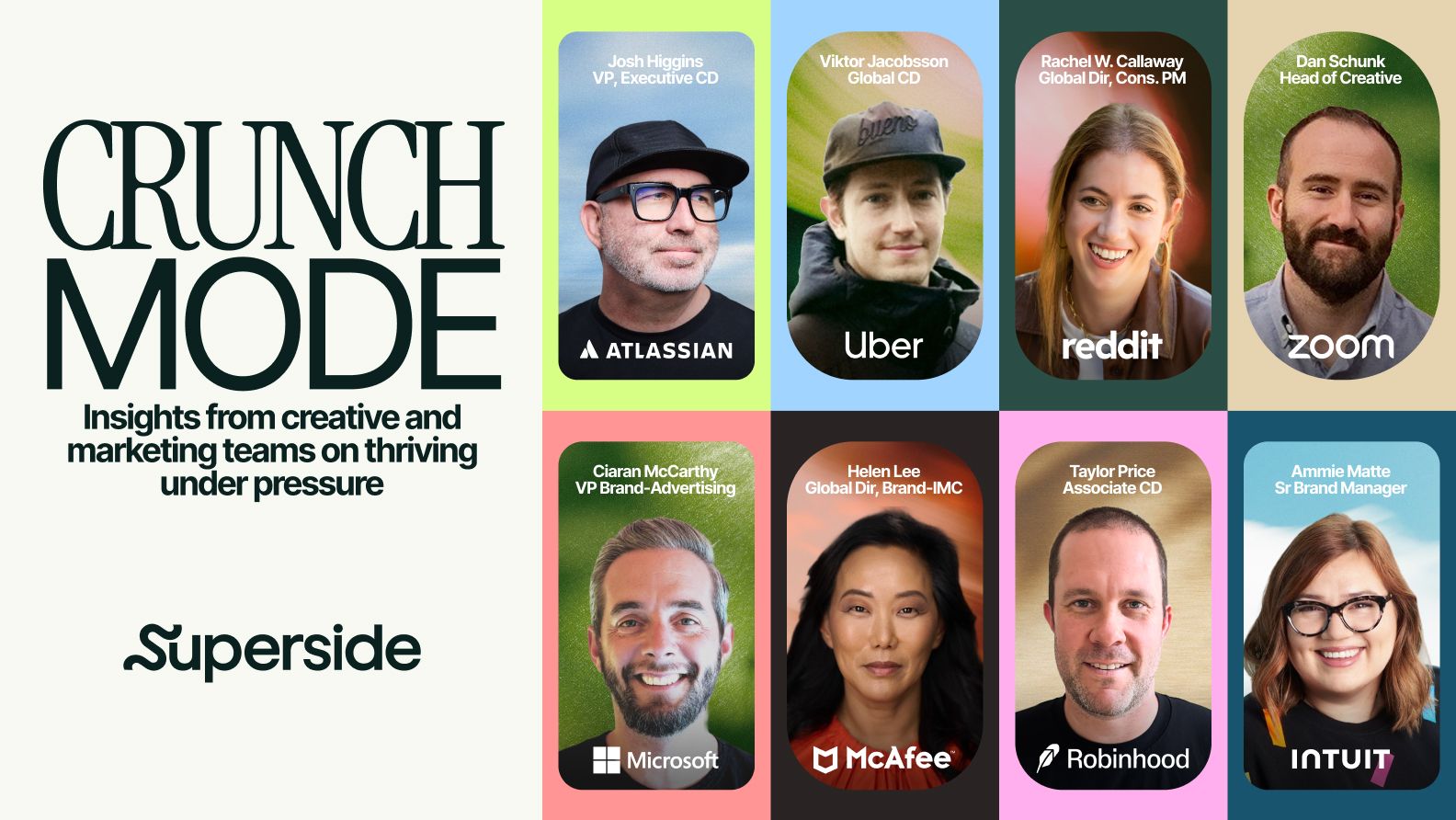
Burn bright, not out: Lessons from Superside's Crunch Mode summit
Crunch periods like Q4 can put even the most prepared teams to the test. Manage it right, and your team can harness that energy to produce amazing work. Manage it wrong, and you could burn out the people who’ve trusted you to guide them through the trenches.So, how can you guide your team through the crunch to do their creative best? For Superside's Crunch Mode summit, we brought together some of the most insightful creative and marketing leaders in the world to share their experience and tips on keeping their teams moving forward, even when it feels like you’re working inside a pressure cooker.Here’s a breakdown of the biggest takeaways from the event—with strategies you can apply to thrive through the busiest seasons of the year.Keeping it real when the pressure is on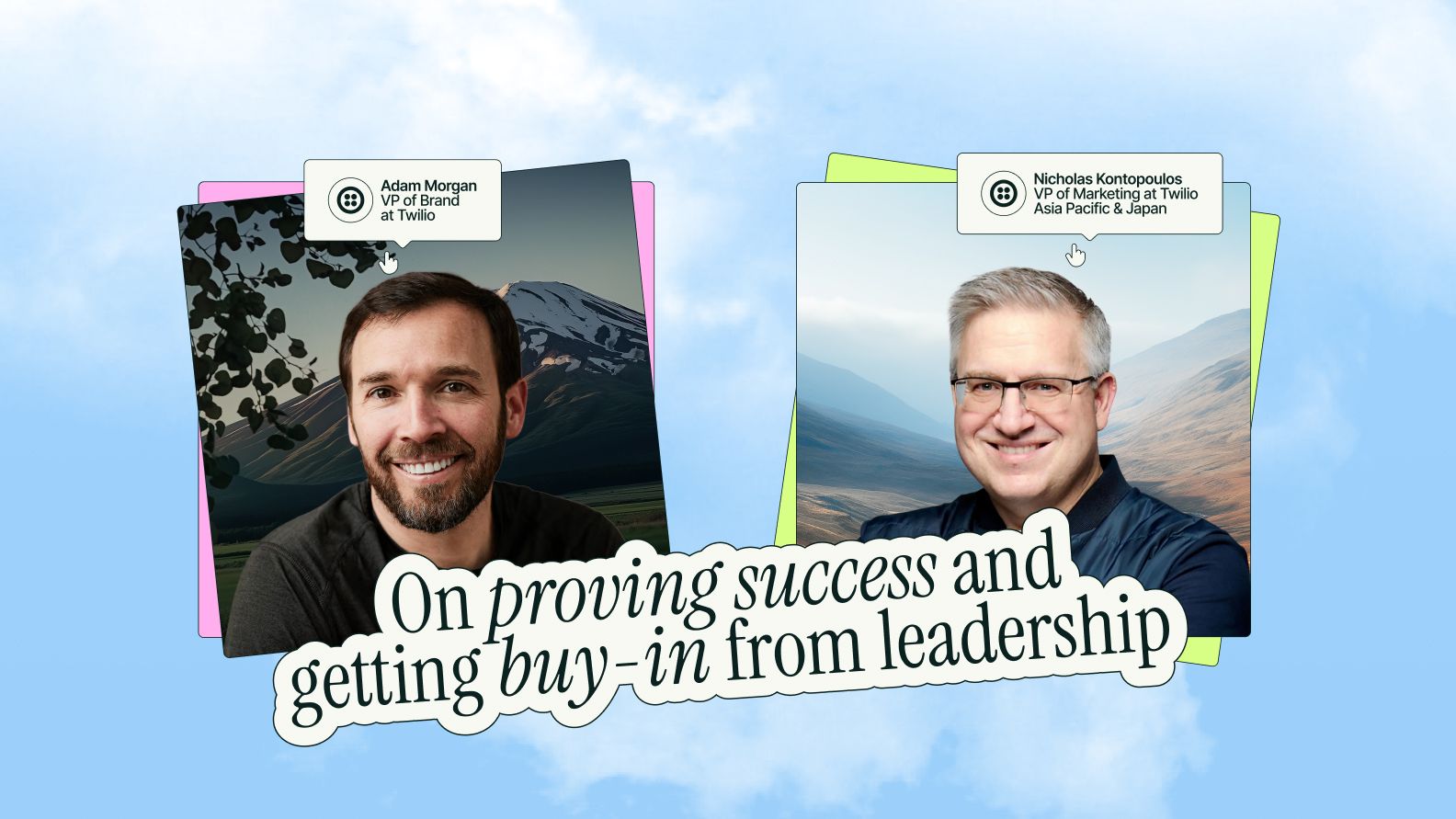
Build trust, get buy-in: Inside Twilio's creative storytelling model
A creative vision can’t fly without buy-in—no matter how bold, inspired or strategic it is.Because without leadership buy-in, key initiatives from rebrands to quarterly campaigns become drawn-out, diluted affairs. And without buy-in from in-region representatives, even the best brand narratives will lack impact.But between Twilio’s Adam Morgan, VP of Brand, and Nicholas Kontopoulos, VP of Marketing, Asia Pacific & Japan, they’ve got it covered.Morgan and Kontopoulos broke down their approach to proving success and getting buy-in across the business in our latest guide, Inside Great Creative Partnerships. From masterful storytelling to a powerful brand-to-revenue model, they shared:How to communicate a creative vision upwards and downwards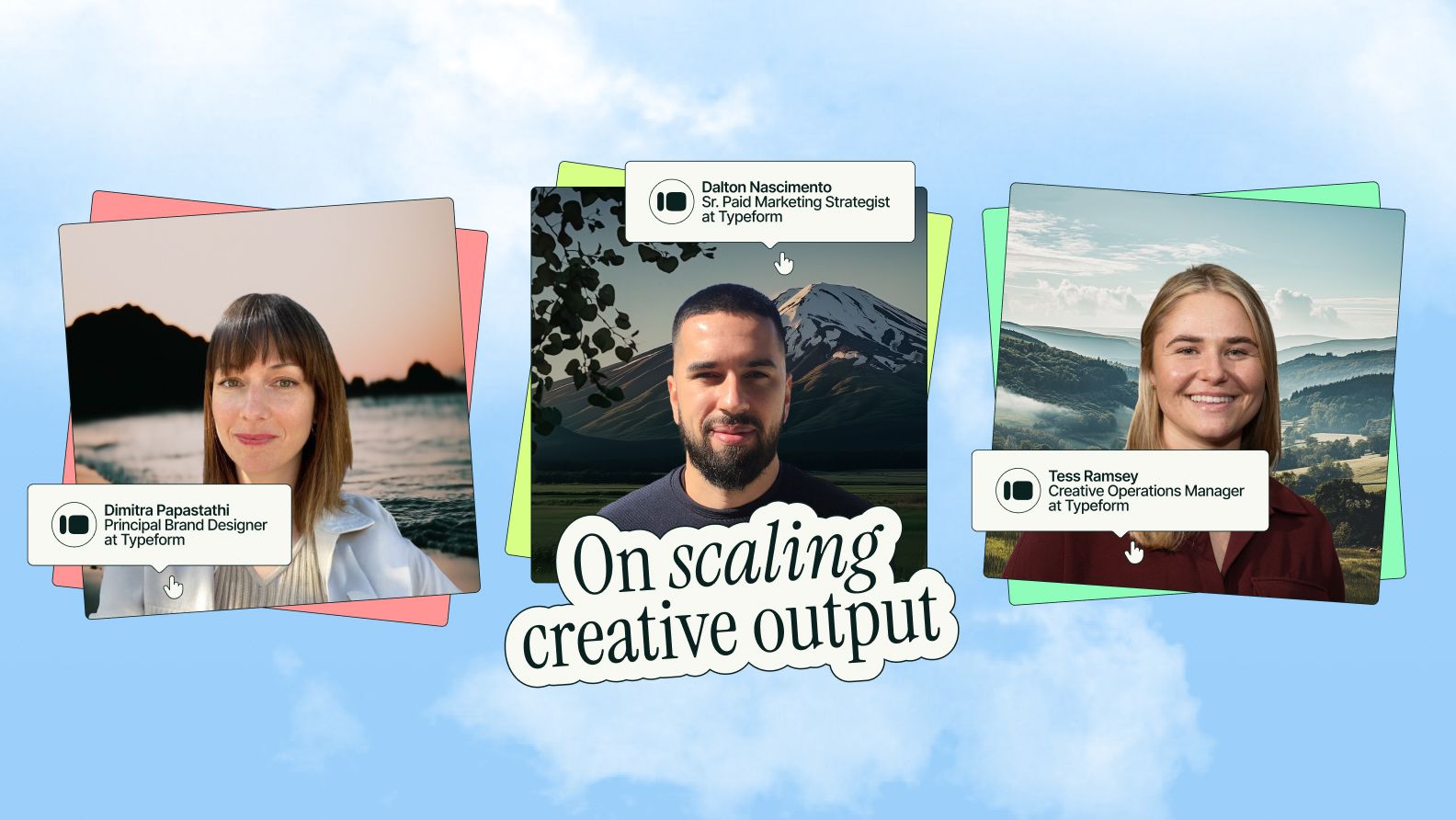
Build systems, fuel scale: Inside Typeform's sustainable creative model
When creative demand spikes but team size stays lean, many marketing and creative leaders face a familiar and pressing dilemma: How do you scale output quickly without sacrificing quality or burning out your team?At Typeform, this challenge isn't theoretical—it's happening in real time. With a small but mighty internal team, they’re navigating growing content needs, faster turnaround times, and increasingly complex campaign requirements. But instead of defaulting to rushed production or one-off fixes, they’ve chosen a more intentional path.We explored that path in Superside's latest guide, Inside Great Creative Partnerships. A true example of building a sustainable creative model and partnership, Typeform's design and paid teams explained how they:Prioritize impact over quantity